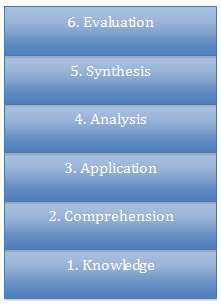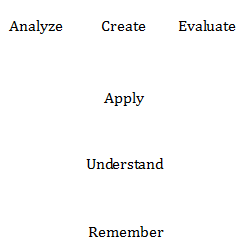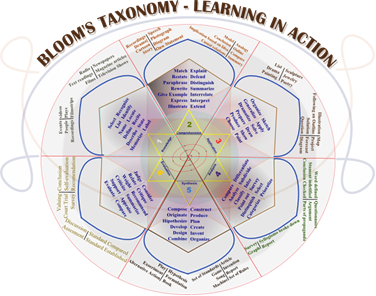
The Bad Ass BA Crampons up the Learning Curve of a New Position
 Following through from the previous articles on changing jobs (see Part 1 and Part 2), what happens when the universe gives you what you asked for, the job you have been hoping for, holding out for? Whether your new position is a small change, such as moving from one group to another in the same department in the same company, or a major change, such as moving across the country to take a position with a different company, along with the new job comes a learning curve. This learning curve can be anywhere between a gentle slope to a climb up a nearly vertical wall. “Learning” – that’s such genteel term; so analytical, so detached; it conveys none of the spine-tingling, ear-ear-to-ear grinning excitement that I feel when it is time to “suck up a new domain”.
Following through from the previous articles on changing jobs (see Part 1 and Part 2), what happens when the universe gives you what you asked for, the job you have been hoping for, holding out for? Whether your new position is a small change, such as moving from one group to another in the same department in the same company, or a major change, such as moving across the country to take a position with a different company, along with the new job comes a learning curve. This learning curve can be anywhere between a gentle slope to a climb up a nearly vertical wall. “Learning” – that’s such genteel term; so analytical, so detached; it conveys none of the spine-tingling, ear-ear-to-ear grinning excitement that I feel when it is time to “suck up a new domain”.
How do we business analysts build the connections from our knowledge and experience to incorporate a new domain? For example, I have previous work experience in shipping, as in ocean transport of those big thirty-foot containers, and in expedited freight, which you know as DHL, FedEx, and UPS. My new position is with a company that provides information management services to the rail industry. I know nothing about the railroad business, but I do know that the fundamental business activity in transportation is to be able to move something from point A to point B and bill for all the services involved in that movement.
My learning curve isn’t a vertical wall, but it is pretty darn steep. The stakeholder community is fascinating. There are hundreds of railroad companies in Canada, the United States and Mexico, but there are the “Class 1” railroads that dominate the business landscape. In addition, there are railroad car owners who lease cars (a train is an assembly of cars and at least one locomotive) to the railroads. There are also component manufacturers who manufacture parts; suppliers who are distribute those parts, and car shops who consume those parts as part of performing maintenance and repair on the cars. There is also government involvement at the federal, state and local levels – just think about it, transportation is essentially a leading indicator of the health of the economy. If trains are moving, that means goods are moving. In order to be able to map the railway industry equivalent of the Quote to Cash business process, I will be inhaling noun phrases, absorbing relationships and concepts through my pores and trying to map all this new information onto my previous experience so that I can make sense of it as fast as I can. As each of us grow in our careers, we will all experience this terror and joy of having to perform while incorporating new knowledge on the fly.
Have you ever wondered how you do it? Is there a model? You betcha! There’s a nifty, keen learning model called Bloom’s Taxonomy, published by Benjamin Bloom in 1956. Below is the graphic model, called Bloom’s Rose, a nice play on his name as well as the shape of the representation. Do click on the graphic to see a readable version on Wikipedia.
In the center of the diagram above are six numbered skills; the numbers represent their position in the hierarchy where 1 is the most fundamental skill and 6 is the most sophisticated. The spiral in the center of the diagram indicates to me that Benjamin Bloom understood that the sequence was not strict; there was a lot of iteration.

A lot of research and discussion has been done on Bloom’s model since 1956 to reflect changes to an information-processing focus of modern Western education. Below is what the current model looks like. As you might guess, this model is still being discussed.

What does this model mean for a business analyst who is on a rapid learning curve? Think about the skills you need for knowledge of, comprehension of, and critical thinking about a particular topic. Let’s walk up from the bottom of the hierarchy. The titles of each section have old skill name in parentheses.
Remember (Knowledge)
The BA shows memory of previously-learned materials by recalling facts, terms, basic concepts and answers:
- Knowledge of specifics – terminology, specific facts
- Knowledge of ways and means of dealing with specifics – conventions, trends and sequences, classifications and categories, criteria, methodology
- Knowledge of the universals and abstractions in a field – principles and generalizations, theories and structures
After studying about eating a healthy diet, the BA can respond to questions like: “What are the health benefits of eating apples?”
Understand (Comprehension)
The BA demonstrates understanding of facts and ideas by organizing, comparing, translating, interpreting, giving descriptions, and stating main ideas:
- Translation
- Interpretation
- Extrapolation
The BA can respond to requests for information such as, “Send me a summary of your comparison of the health benefits of eating apples vs. oranges.”
Apply (Application)
The BA demonstrates the ability to use the new knowledge, solving problems to new situations by applying acquired knowledge, facts, techniques and rules in a different way.
The BA can respond to requests for information, such as, “Which kinds of apples are best for baking a pie, and why?”
Analyze (Analysis)
The BA examines and breaks information into parts by identifying motives or causes. The BA can make inferences and find evidence to support generalizations:
- Analyze elements, e.g., of a community or system
- Analyze relationships among those elements
- Analyze organizational principles
The BA can respond to requests for information such as, “List four ways of serving foods made with apples and explain which ones have the highest health benefits. Provide references to support your statements.”
Create (Synthesis)
The BA can compile information together in a different way by combining elements in a new pattern or proposing alternative solutions:
- Produce a unique communication
- Produce a plan, or proposed set of operations
- Derive a set of abstract relations
The BA can respond to a request to provide alternatives such as, “How can we convert this “unhealthy” recipe for apple pie to a “healthy” recipe by replacing the objectionable ingredients? Explain the health benefits of using the ingredients you chose vs. the original ones.”
Evaluate (Evaluation)
The BA can present and defend opinions by making judgments about information, validity of ideas or quality of work based on a set of criteria:
- Judge / Assess in terms of internal evidence
- Judge / Assess in terms of external criteria
The BA can evaluate a set of alternatives and make a recommendation, such as, “We want to serve apple pie as a snack to the kids in our after-school science program. We are trying to decide whether to serve freshly-baked apple pie using organic apples from a local farm, or pre-frozen apple pies, also made from organic apples but come from sources more than 100 miles away. The issues are cost, ease of delivery, and the community’s desire to support local businesses. Please advise.”
Summary
Remembering, understanding, applying, analyzing, synthesizing/creating and evaluating – do these six terms resonate with you? When you learn something, did you realize you were doing all this work? I think this is why our brains hurt when we are on a steep learning curve; we can almost feel new synapses forming in our brain as the new connections form. What is even cooler is that by the very nature of the work we do, the opportunities to learn, both breadth and depth, are nearly without limit. We just have to seek out those opportunities and make them happen.
Don’t forget to leave your comments below.
Cecilie Hoffman’s professional passion is to educate technical and business teams about the role of the business analyst, and to empower the business analysts themselves with tools, methods, strategies and confidence. She is a business architect at Railinc in North Carolina. See her blog on her personal passion, motorcycle riding, at http://www.balsamfir.com. [email protected].
